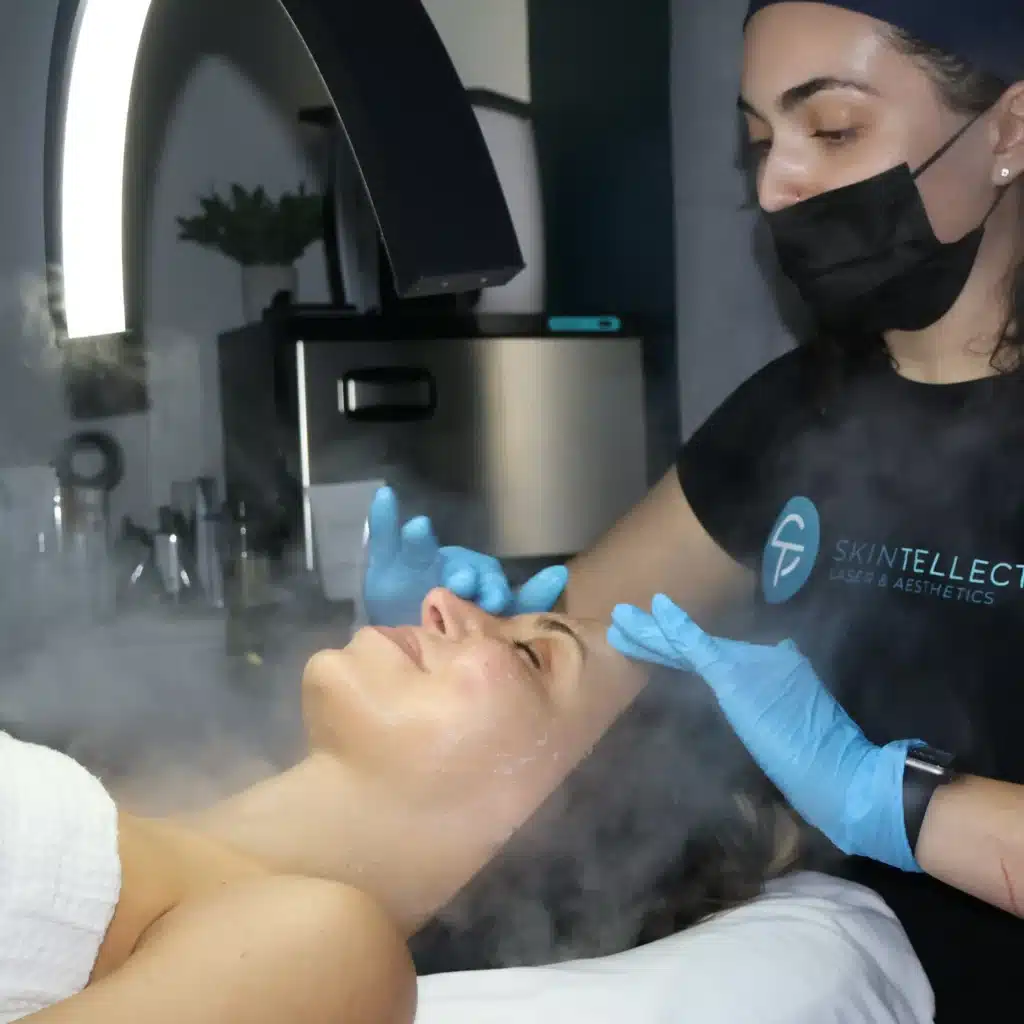Target pigment at the root and get long lasting results with advanced laser in Tampa
Laser Pigment Removal is a non-invasive treatment that uses advanced laser technology to target and break down unwanted pigmentation, such as dark spots, melasma, acne scars, sun damage, and hyperpigmentation, allowing the body to naturally eliminate the pigment for a more even complexion.
The lasers, such as the Fotona SP Dynamis Pro and StarWalker, emit concentrated light energy absorbed by melanin (pigment) in the skin. This energy breaks down the pigment into smaller particles, which the body gradually clears away over time, leaving the skin more even-toned.
Yes, Laser Pigment Removal is safe when performed by our qualified professionals. The StarWalker Laser uses photoacoustic energy that specifically targets pigment cells without damaging surrounding skin, minimizing the risk of side effects like scarring or hyperpigmentation.
Yes, Laser Pigment Removal can effectively treat melasma. The StarWalker Laser uses gentle shockwaves to target melanin in the pigment cells, making it especially effective for treating stubborn melasma without relying on heat, which can worsen the condition.
There is minimal downtime with Laser Pigment Removal. Patients may experience some cosmetic downtime such as mild redness or swelling immediately after treatment and a day or two following, and may experience mild peeling and flaking 1-2 weeks after the treatment. We recommend scheduling your treatment when you do not have any important events coming up.
The number of sessions depends on the severity of the pigmentation and individual skin type. Most patients achieve optimal results after 3-5 sessions, but your provider will recommend a personalized treatment plan during your consultation.
Laser Pigment Removal can provide long-lasting results, but new pigmentation can develop over time due to factors like sun exposure or hormonal changes. Wearing sunscreen and following a good skincare routine can help maintain your results. Melasma patients may need more frequent maintenance.
Most patients report minimal discomfort during the procedure. The StarWalker Laser uses a gentle approach, and the feeling is often described as a mild snapping or mild sunburn sensation on the skin. We use topical numbing cream on the area to ensure you are comfortable.
Yes, Laser Pigment Removal at Skintellect is safe for all skin types. Our experienced providers have worked with all skin types, 1-5. During your consultation, we will assess your skin to determine the best approach and customize the treatment to your skin and your goals.
You may start seeing improvements within a few weeks after your first session as the pigment gradually fades. Full results typically appear after completing the recommended number of treatments.
Before your treatment, you’ll meet with a provider to discuss your pigmentation concerns and medical history. We may do a patch test will ensure you’re a good candidate.
Avoid sun exposure and self tanner for 14 days, and stop using retinol, alpha hydroxy acids, and acne medications 1-2 weeks before treatment. If you’re taking Accutane, wait six months after stopping. Avoid antibiotics and photosensitizing meds, and notify your provider if you’re on hormone or antidepressant medications. Pregnant women should delay treatment.
After treatment, pigmented areas may darken initially, confirming the laser’s effect. Over the next 1-2 days, these areas may appear mottled and will fade over 1-2 weeks. Makeup can be used to cover them. Avoid direct sun exposure for 2 weeks and strenuous exercise or heat for 24-48 hours. Aloe Vera or ice packs can help reduce redness. Most patients need 1-4 treatments, spaced 6-8 weeks apart, with a 50-90% reduction in pigmentation. To prevent pigmentation from returning, follow your post-treatment care plan, especially avoiding excessive sun exposure.
Monday & Tuesday: 9:00 AM – 6:00 PM
Wednesday – Friday: 9:00 AM – 5:00 PM
Saturdays: By Appointment Only
(Hablamos Español)
Copyright 2024 © Skintellect

Unlock a world of beauty and self-care. Experience personalized treatments, luxurious benefits, and a community dedicated to your glow!


Welcome to Skintellect! Fill out our new patient form to receive 10% off services or packages at your first visit!
